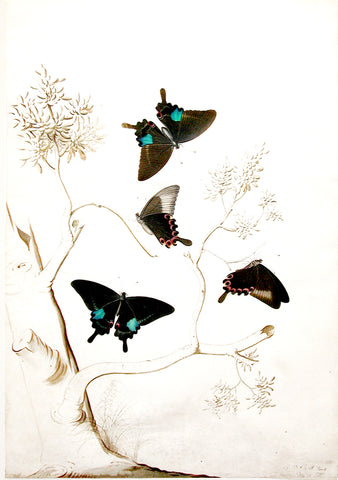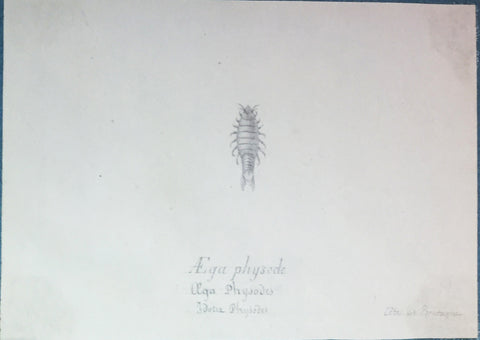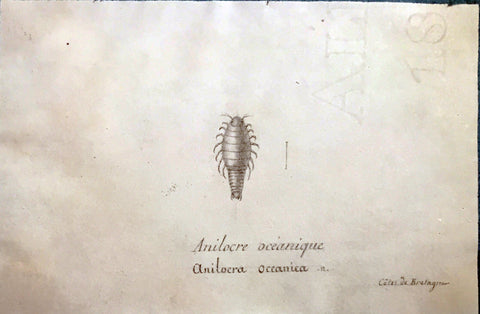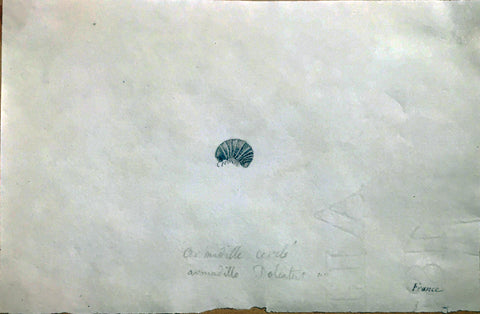
Georg Dionysius Ehret (German, 1708-1770), Spicebush Swallowtail Butterflies
Spicebush Swallowtail Butterflies
Watercolor on vellum
Signed and dated lower right: G. D. Ehret. Pinxit. 1751.
Paper size: 20 1/2 x 14 1/2"
Frame size: 32 x 25 3/4"
The Spicebush Swallowtail Butterfly was grouped by Linnaeus under the genus name Papilio, with specific epithets derived from the names of heroes from the Trojan War. The Latin word for butterfly is Papilio. The subgenus Pterourus is derived from the Greek roots "ptero" and "ura," meaning wing and tail, respectively. Troilus, the son of Priam, king of Troy, in Homer's Iliad, is the namesake for this butterfly.
This butterfly can be found throughout the eastern half of the US, from southern Canada to southern Florida (excluding the Miami area and Keys) and west to Texas. It is less common farther west from the Mississippi River. The larvae of this butterfly feed only on plants belonging to Lauraceae (laurels.)
There are two subspecies of the Spicebush Swallowtail Butterfly: Papilio troilus Troilus, prevalent throughout the Eastern United States, from New England to Wisconsin, west to Illinois, Wisconsin, North Dakota, and Nebraska. It also abounds in Texas and Colorado. The second subspecies is Papilio troilus ilioneus, confined to the Southeastern United States throughout Florida, along coastal Georgia, and some parts of Texas.
The upper surface of the forewings is black, with narrow marginal and broader sub-marginal rows of light yellowish spots. The upper surfaces of the hindwings have rows of light green spots. The median areas of the hindwings are dusted with blue in females and blue-green to green in males (with considerable variation in the blue-green coloration of males.) The undersides of the hindwings have marginal pale green spots and marginal and post-median rows of bright orange spots separated by black and blue patches. The distinguishing difference in color between the two subspecies is evident where the spots are blue on the hindwing of the P. t. troilus and more yellow in P. t. ilioneus. Additionally, splashes of blue can trail down the tail of P. t. ilioneus.
Georg Dionysius Ehret, a German-born botanist, and artist who lived from 1708 to 1770, created a stunning watercolor painting that beautifully depicts the Spicebush Swallowtail Butterfly. This particular butterfly species is native to the United States and can be found in many habitats, including woodlands, swamps, and gardens. During Ehret's time, the Spicebush Swallowtail Butterfly was considered quite exotic, as it originated from the American colonies. Ehret likely painted this butterfly from a patron's collection, as was often the case with exotic specimens during this period. The painting showcases the butterfly's intricate patterns and vibrant colors, making it a true masterpiece of natural history art.Ehret was one of the first artists to focus on exotic species from across the Atlantic, and his draftsmanship was so fine that his friend and colleague, the great artist/naturalist Mark Catesby, used at least three of the German painter’s botanical illustrations for his seminal Natural History of Carolina, Florida, and the Bahama Islands. Today, Ehret’s images are widely considered the most desirable to emerge from that monumental publication, and he collaborated with Catesby in other ways, too, in the compilation of the Natural History, offering advice or adding significant elements to Catesby’s initial compositions. Catesby was influenced greatly by Ehret’s accomplished style, especially in the representation of three-dimensionality, but the older artist was never able to attain the same high level of meticulous realism and vitality. Ehret, in turn, drew on a few Catesby’s discoveries and observations in his own work. Unlike Catesby, Ehret was never able to travel to America but became fascinated with examples of New World flora that he saw in English natural history collections, such as that of Peter Collinson, a friend, and patron of both artists. Painted just at the time of the publication of Catesby’s Natural History, these watercolors are spectacular early representations of American flora.
In England, where he eventually settled, Ehret became the only foreigner to be elected a Fellow of the Royal Society. Though Ehret’s work is best known through printed illustrations done in collaboration with Trew, even his impressive engravings cannot compare with the vibrancy, color, and detail of the original paintings. Only in his remarkably sensuous and accurate watercolors is the full extent of his mastery and sensitivity clear. Ehret’s delicate modulations of tone and shadow bring vitality to these exquisite original watercolors, belying their ostensibly documentary purpose. His distinctive style transcends scientific illustration, achieving a level of beauty that has rarely been equaled in the history of botanical art.
or by email at loricohen@aradergalleries.
We Also Recommend





